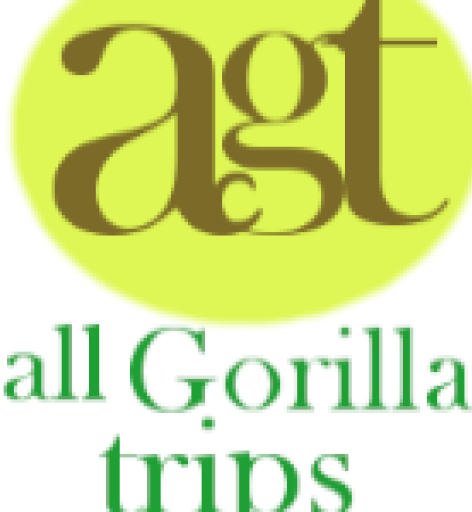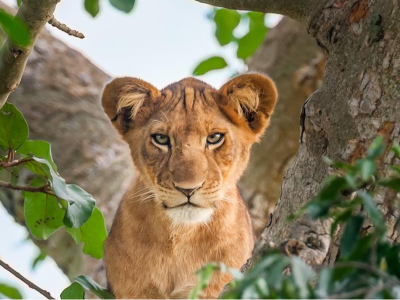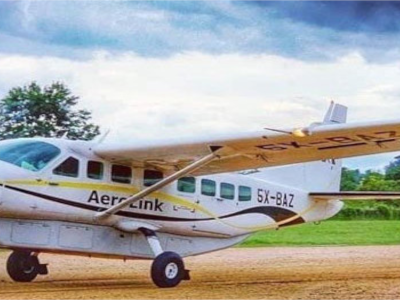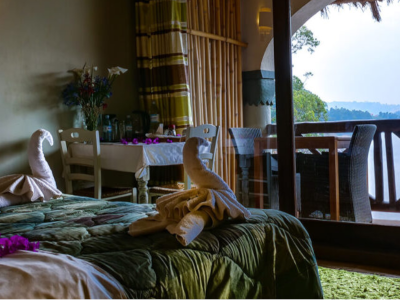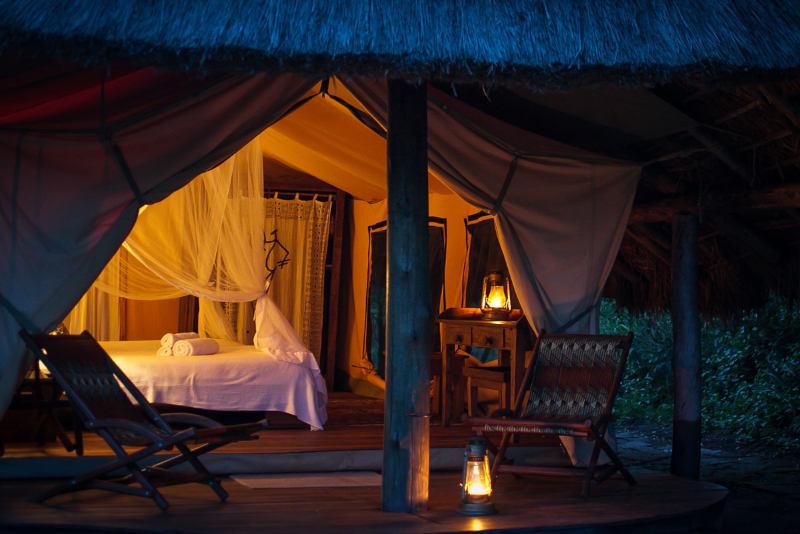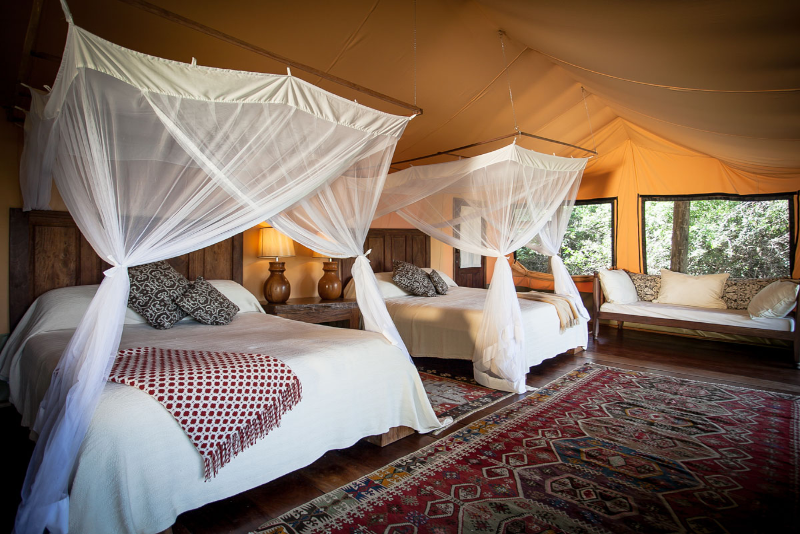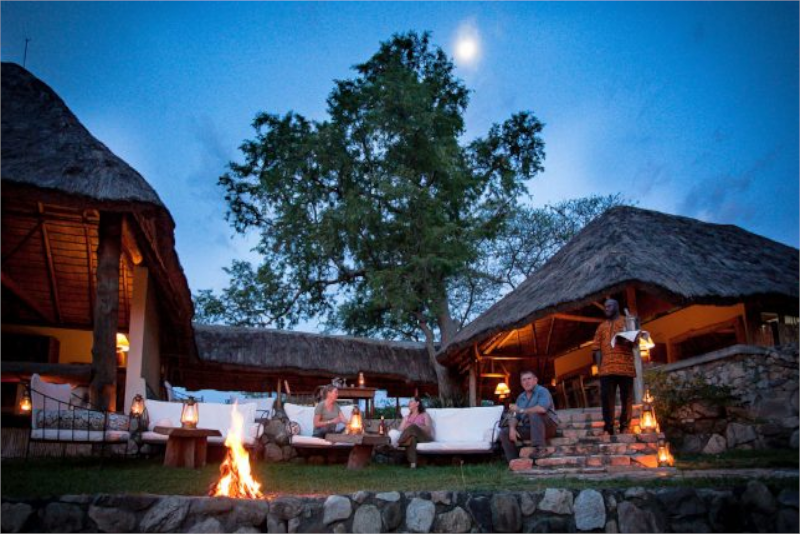Semliki Safari Lodge
Semliki Safari Lodge
Nestled on the mystical Wasa River Valley is the intimate and luxurious Semliki Safari Lodge. The 8 rooms are tented with large four-poster beds, Persian carpets and en-suite bathrooms.
At night you can hear the animals moving around you… particularly the leopards harsh sawing as it hunts baboons. There is a great swimming pool area and the fresh food is renowned as some of the best in Uganda.
You can go for a boat ride on Lake Albert in search of the endangered Shoebill and enjoy open-vehicle game drives. There are miles of amazing trails cut through the riverine forests that crisscross the savanna – perfect for guided walking.
They helped develop the Semliki Chimpanzee Research Project – so have a chat with the chimp researcher and learn about evolution and bipedalism.
Staying at Semliki is like stepping back in time. It evokes the spirit of the old explorers, it piques curiosity and inspires discovery.
Semuliki National Park and Semuliki Wildlife Reserve
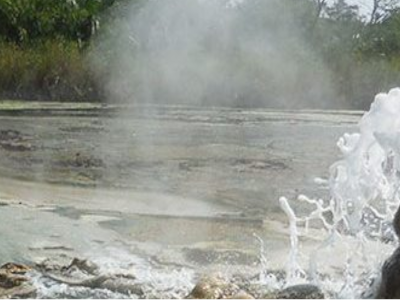
Semuliki National Park and Semuliki Wildlife Reserve
Semuliki Wildlife reserve is one of Uganda's oldest wildlife reserves, originally gazzeted in 1932 as the Tooro Game reserve. It extends from Ntoroko on the southern shores of Lake Albert to the north east of the Bundibugyo Road, it has thick swampy grounds close to Lake Albert. The rest of the area is typically savannah interspersed with acacia-combretum woodland. Small patches of borassus palm appear and significant stretches of riparian woods along river courses.
The scenery is magnificent when flying in by air or driving out by road through Fortportal. From the ground on a clear day, the Congolese Blue Mountains are clearly visible in the west with the majestic Rwenzoris and their glacial peaks in the north; Lake Albert's eastern shore culminates at the foot of the sharp rift valley escarpment. The valley floor itself is relatively flat and sits at about 600 m above sea level.
Unfortunately massive poaching during the unprotected times of Amin's rule meant many of the animals were hunted almost to extinction.
From 1997 the populations of the animals have started to recover slowly but surely an indication is the growth of the Uganda Kob which have recovered from a low of around 1000 in 1997 to around 8000 in 2006 (last count). Buffaloes once numbering as low as 50 are now around 1000 and there are also small numbers of elephants and waterbuck.
There are a good number of primates including the habituated chimpanzees in the Mugiri Forest. Chances of seeing the chimps are currently around 80%. During the chimp walk there are chances of seeing the localised forest elephants. Other primates include the black and white colbus monkey, olive baboon, red tailed and vervet monkeys. Leopards are seen relatively frequently and warnings by olive baboons as to their presence are commonly heard.
The park's best asset is it's wilderness and very low tourist numbers. Birding is one of the biggest attractions with about 350 to 400 bird species present. Species found here include the ground hornbill, marsh tchagra and African crake with a good variety of raptors.
There are night game drives in this area and they usually result in good sightings of owl and pennant and standard winged night jars. It is also a good opportunity to see sleeping nurseries of Uganda kob guarded by their ever present mothers and lone males.
One of the best activities is the boat trip on Lake Albert muddy waters which not only gives an opportunity to find the elusive shoebill but gives a good look at the local village life. There is a large colony of red throated bee eaters which are present on the sand banks near Ntoroko between December and March.
A surprisingly beautiful waterfall which is replica of the Murchison Falls is found at the foot of the Rift Valley escarpment throwing it's water into the lake.
Further West of the Semuliki Wildlife Reserve is the Semuliki National Park- distinctly separated from the reserve but confusingly sounding one and the same. The Bwamba Forest is included in this area and it is not much visited by the tourists other than serious birders although there is a very beautiful hot spring in the area.
Situated on the Congolese border and bounded by the Semuliki River it is a practically unspoilt tropical lowland forest. As an extension of the massive Ituri Forest which runs all the way to the Congo River, species present in the forest include lowland species found in the Congo Basin.
Semuliki National Park sprawls across the floor of the Semuliki Valley on the remote western side of the Rwenzoris.
The park is dominated by the eastern most extension of the great Ituri Forest of the Congo Basin. This is one of Africa's most ancient and diverse forests; one of the few to survive the last iceberg 12 - 18 thousand years ago.
The semuliki valley contains numerous features associated with Central Africa rather than East Africa. The semuliki River (which forms the international boundary) is a miniature version of the Congo River, the forest is home to various Central Africa wildlife species, and the local population include the Batwa pygmy community that originated from Ituri. As a result this park provides a taste of Central Africa.
Around 300 species of butterfly include 46 species of forest swallow tails and 235 moths species. there are over 300 tree species recorded of which 30% do not occur elsewhere in East Africa. There are almost 400 bird species of which 35 are Guinea-Congo forest biome birds. Some of these include the spot breasted ibis, Hartlaub's duck, Congo serpent eagle, Gran'ts blue bill, northern bearded scrub-robin and the Gabon Wood pecker.
There is not a very comprehensive list of wildlife but they include the pygmy antelope, two types of flying squirrel and six types of bats. A particularly peculiar antelope is the water chevrotain, a tiny duiker like ungulate sharing some structural features with pigs and thought to be a predecessor of all deer, cows, giraffes and modern day antelopes!
Primates are romoured to include lowland Gorilla but none have been seen to date. There are un habituated chimpanzees, Brazza monkeys, grey cheeked mangabeys, black and white colobus monkey and olive baboons. There are some elephant and bufallo with a small range of bush pigs, sitatunga and white bellied duiker.
There is a pygmy village at Ntandi which is informative to visit but be prepared to pay for photographs. The Bambuti regularly smoke marijuana and recent concessions allow them to hunt and fish in the national park although they are restricted from hunting certain species. the oldest inhabitants of Uganda, there are only around 60 Bambuti left today and interbreeding has meant all of the current teenagers are taller than their fore bearers
Read more
